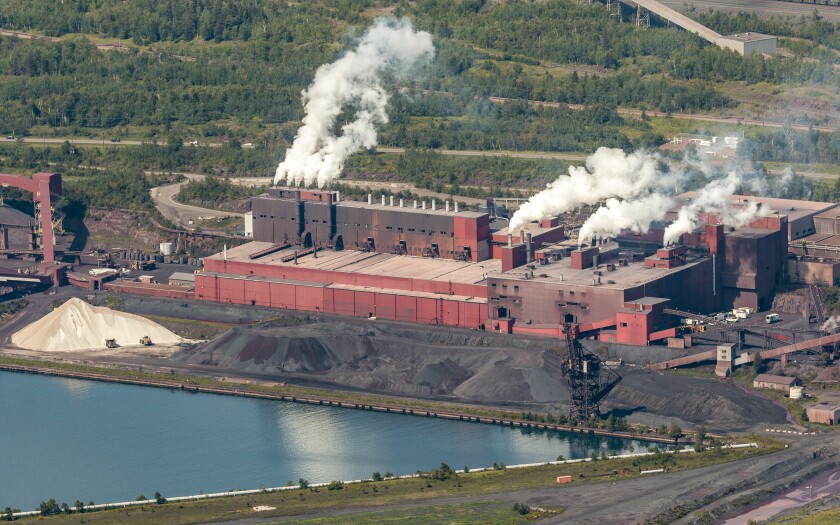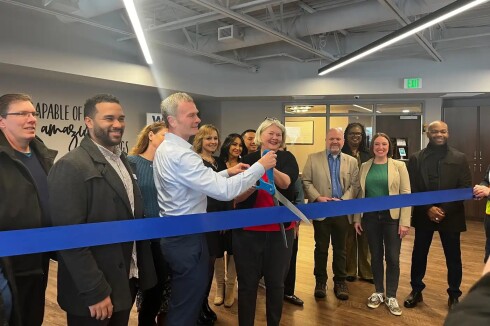Three miles inland from the North Shore of Lake Superior, Cleveland-Cliffs’ Milepost 7 tailings basin holds 40 years' worth of tailings — the fine pieces of waste rock left over after taconite is crushed and stripped of iron ore — behind its dams and on top of its 2,100-acre footprint.
But under an expansion project planned by Cliffs, that footprint, which has mostly covered the same area since the basin’s construction, would expand by 850 acres — a 40% increase in the basin’s surface area.
ADVERTISEMENT
The basin was completed in 1980 after then-owner Reserve Mining was forced to stop its decadeslong practice of dumping tailings directly into Lake Superior and years of court battles over the tailings’ pollution and asbestos-like fibers found in the drinking water of Duluth.
Today, tailings mixed with water are taken by pipeline from Cliffs' Northshore Mining pellet plant in Silver Bay to the massive basin outside of town for indefinite storage and, eventually, reclamation by planting vegetation over the basin and other methods.
Over the last 40 years, the tailings basin’s footprint has mostly remained the same and tailings cover about 2,100 acres today, according to the U.S. Army Corps of Engineers. As more tailings were added, and more space was needed, the dam walls were built higher using coarse tailings brought in from the plant by rail.
But the tailings storage footprint could soon grow by 850 acres, and an additional 350 acres needed for supporting infrastructure, as Cliffs plans a significant basin expansion, according to documents from the U.S. Army Corps of Engineers, Minnesota Department of Natural Resources and Minnesota Pollution Control Agency.
Cliffs did not respond to emails or phone calls seeking comment for this story.
Proposed construction
Cliffs is planning to move a railroad embankment currently on the northwestern-most edge of the basin another 4,000 feet to the northwest. The railroad embankment would then serve as that side’s dam and boundary.
Joe Henderson, director of the DNR’s division of lands and minerals, said moving the railroad grade in that direction would take advantage of existing elevation gains as basin barriers instead of needing to continuously raise it as the new section of basin filled with tailings.
"In moving the railroad, it would allow the (tailings) to go back into the natural contours of the land," Henderson said.
ADVERTISEMENT
Additionally, Dam 1 on the south side of the basin would likely need to be extended to the west using coarse tailings delivered by rail, the same method used on the other dams.
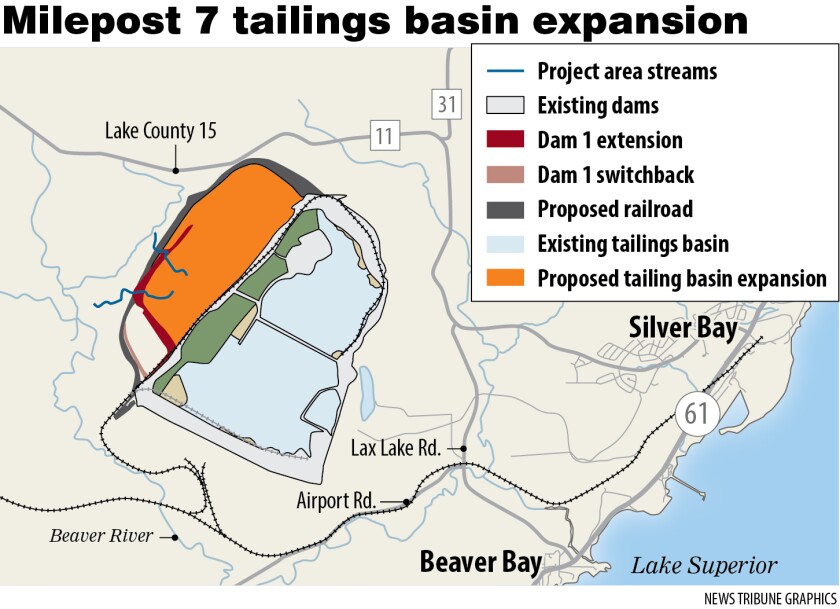
According to a 2016 presentation on the expansion delivered by Cliffs to the MPCA, DNR and Army Corps, the company said it will continue to use approved upstream construction methods, though predecessor Reserve’s original plans called for downstream methods.
The upstream construction method has come under increased scrutiny after dams constructed with that method have failed, causing widespread pollution and killing hundreds.
After a Vale-owned upstream tailings dam in Brumadinho, Brazil, collapsed in January 2019 and killed more than 250 people, Cliffs CEO Lourenco Goncalves defended his company’s use of upstream dams, arguing that the dams aren’t built nearly as steep or as high as dams that have failed and that the dams are monitored closely by the company.
"There's nothing wrong with the method, if you manage it right,” he told the crowd gathered at Cliffs’ state of the company lunch at Chisholm’s Minnesota Discovery Center in March 2019.
ADVERTISEMENT
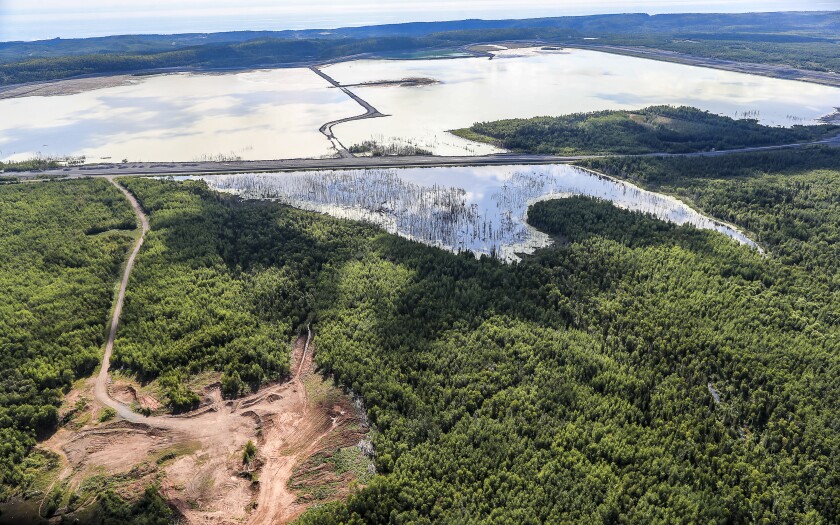
The 2016 presentation to state and federal agencies said this upcoming expansion “will establish the final basin footprint.”
“Once the entire footprint of the basin is established, no further progression of the basin footprint occurs. The basin merely increases in height throughout the remainder of its active life,” the company wrote. “Due to the large size of the basin and ground contours, covering the new portion of the basin’s footprint with fine tailings will take several decades following commencement of construction.”
Permitting needed
A timeline for construction is unclear, but Cliffs is actively working through the regulatory process for the MPCA, DNR and Army Corps. An Army Corps stream mitigation plan for the project said the company would aim for the 2021, 2022 and 2023 construction season.
The Army Corps on Thursday announced it was extending the comment period to Sept. 26 for the project’s permit under Section 404 of the Clean Water Act, which oversees construction-related impacts to wetlands and waterways.
According to the project’s public notice , the project’s impact on wetlands under Section 404 had been reduced from 272 acres to 163 acres after the Navigable Waters Protection Rule went into effect in June. Environmentalists argue the rule, introduced by the Trump administration, weakens water regulations, while the Trump administration argues it lessens regulatory burdens, especially on farmers, ranchers and rural landowners.
ADVERTISEMENT
At the DNR, agency officials have determined a supplemental environmental impact study for the project is not necessary because a 1977 Army Corps environmental impact statement took into account stages of expansion within an area reviewed at the time.
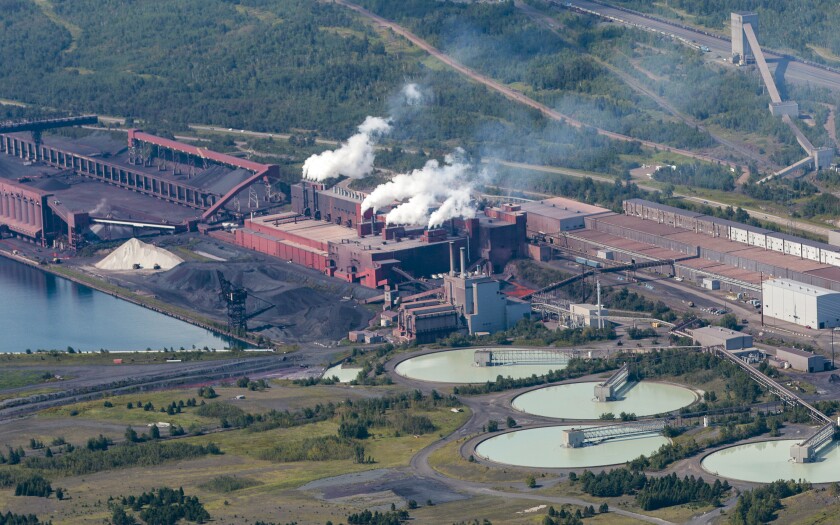
While any substantial change to that original environmental review that would “affect the potential significant environmental effects of tailings management at the site” requires an environmental impact statement supplement from the DNR, the state agency in 2017 determined that was not necessary.
The DNR said because only a small section of the project sits outside the footprint laid out in the 1977 environmental review, a supplement was not necessary.
“The project also does not appear to generate significant environmental effects that were not considered in the 1977 Final EIS nor does it appear to affect the availability of prudent and feasible alternatives with lesser environmental effects,” the DNR wrote in the 2017 assessment. “Preparation of an EIS Supplement is not supported.”
Paula Maccabee, counsel and advocacy director of WaterLegacy, an environmental group that has challenged the iron ore and copper-nickel mining companies in the state on numerous issues, said she would like a new environmental review completed, preferably one that would consider tailings stored in a lined mine pit.
ADVERTISEMENT
"I would like to see the DNR say, 'This thing needs an environmental impact statement based on 2020 science and also based on 2020 availability of other storage options,'" Maccabee said.
Cliffs will, however, need a permit-to-mine amendment from the DNR for the project. As of August, however, the DNR had not received an application, Henderson said.
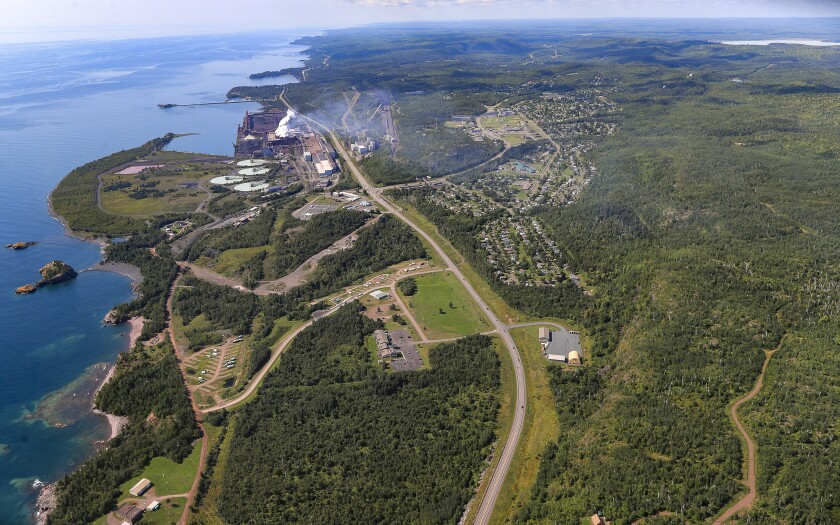
The MPCA last year denied the expansion a 401 Water Quality Certification, a permit awarded by a state's regulators if the project's impact on water falls within the state's standards, but the denial without prejudice meant Cliffs could reapply for the permit if it provided more information, which it did last month.
"The MPCA has determined there is not reasonable assurance that the activities proposed in the application will be conducted in a manner that will not violate applicable water standards," the MPCA wrote in an Aug. 2, 2019 letter to the Army Corps and Cliffs. The MPCA requested information on rail-car spillage, baseline data, incident mitigation, anti-degradation plans. alternatives and monitoring plans of impacted wetlands and streams, among other issues.
According to MPCA spokesperson Darin Broton, the Army Corps gave the agency a Dec. 31, 2020, deadline to determine if it will issue a certification to Cliffs.
ADVERTISEMENT
"We are still reviewing the application," Broton said. "If the MPCA concludes that the application does not violate water standards, a draft 401 certification would be publicly available in early fall with a 30-day comment period."
